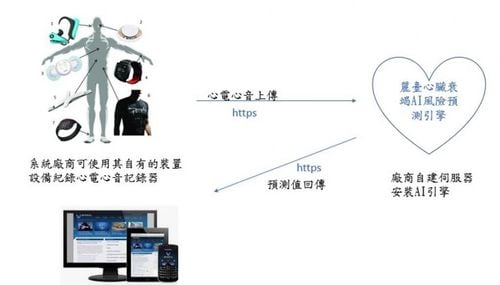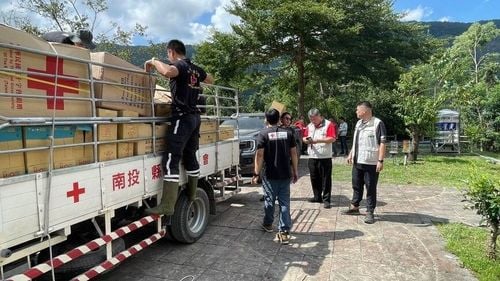【2021 Application Example】 Realizing the dream of unmanned stores, Magpie Life is building the future of the smartphone industry
"The DNA of Magpie Life is not limited to vending machines. We believe that vending machines combine technology, access, and humanities to bring us exciting results." This is a sentence on the official website of Magpie Life. Let the vending machines bring To live a pleasant life and build a considerate, technological and sustainable future for the smartphone industry is also the original intention of Magpie Life.
Founded in 2018, Magpie Life launched Taiwan’s first private-brand mobile payment (scan code + sensor) 4 months after its establishment, completing the consumption experience through screen touch. The Magpie U1 smart vending machine manages the POS system and gathers data in the background, allowing consumers to synchronize with the world's new retail pace and experience a new retail consumption experience of purchasing convenience, checkout security, visual entertainment, and improved logistics replenishment efficiency. .
Traditional vending machines lack information visibility and AI technology assists in information transparency
This time, the Magpie smart vending machine is also equipped with AI technology to provide adjustable shelf space , a vending machine equipped with an industrial computer and a large-size touch display screen to achieve the purpose of a store-less store.
Magpie Life stated that the biggest problem with traditional vending machines is the lack of information visibility. To check inventory, replenishment personnel must physically inspect each machine, which is time-consuming and costly. When a machine breaks down, it will generally be unable to operate for a long time. Most failures go unreported and are not discovered until the next restocking crew arrives to replenish supplies. Then you have to wait for a service technician to be scheduled, which can take weeks. Traditional vending machines lack real-time interactivity. When consumers encounter problems after inserting coins, manufacturers cannot handle them immediately. In addition, traditional vending machines are less flexible and cannot adapt to changes in consumer preferences.
▲Traditional vending machines have shortcomings such as limited change shopping, single payment tools, limited number of products, and few choices.
Affected by the COVID-19 epidemic, consumption habits have shifted to contactless methods, causing the unmanned store market to heat up. Generally, vending machines can only place relatively simple products such as drinks, food, etc. The properties available for sale are limited. The patented vending machine developed by Magpie can adjust the shelf space and is equipped with a lifting cargo elevator, which is suitable for various types of goods. In addition, the machine is equipped with an industrial computer and a large-size touch display screen, which can meet the needs of advertising support at the same time. It is expected to move towards a storeless store.
According to Magpie Life Observation, the consumer market trend in the past two years is that consumers demand convenient life, food consumption patterns value dining experience/simple and fast, and are equipped with mobile phone-connected ordering models, and hot drinks and Fresh food delivery is the focus of two major trends. The location, items sold, consumption methods and multiple payment methods are the focus of market growth for smart vending machines.
In terms of convenience, Taiwanese consumers still prefer to purchase vending machine food near stations, airports, schools, and businesses in business districts. Various payment methods are also gaining more support from consumers, indicating that in the future, automatic Vending machines can be developed in two directions: diversified items and diversified payment methods.
AI sales forecast technology integrates back-end management to achieve precise marketing purposes
Due to the wide variety of products, it is difficult to know the performance of products under different factors (such as season, market conditions) , promotional activities, etc.), it is easy to cause out-of-stock or over-inventory situations. Magpie Life has specially developed "AI sales forecasting technology" and integrated it into the back-end management system, hoping to lock in customer purchasing preferences and intentions through data analysis. In order to achieve the purpose of precise marketing, make accurate business decisions and effectively allocate limited resources.
▲The introduction of AI systems can achieve the three major goals of precise marketing, inventory management and supply chain management.
This system is a replenishment decision-making aid designed specifically for supply chain managers. It uses AI to predict future sales demand, helping companies effectively optimize production capacity, inventory and distribution strategies. Its overall system architecture includes:
1. Data exploratory analysis function: Provides automatic value filling, automatic coding and automatic feature screening functions for missing values in the data.
2. Modeling function:
(1) Provides model training functions for two types of prediction problems: regression (Regression) and time series (Time Series Forecast).
(2) Supports Auto ML automatic modeling, and the best model is recommended by the system. Integrated models can also be established to improve model accuracy.
(3) Supports multiple algorithm types: Random Forest, XGBoost, GBM and other algorithms.
(4) Supports a variety of time series models: exponential smoothing, ARIMA, ARIMAX, intermittent demand, dynamic multiple regression and other models.
(5) Supports a variety of model evaluation indicators: R, MAE, MSE, RMSE, Deviance, AUC, Lift top 1%, Misclassification and other indicators.
(6) Supports automatic cutting of training data sets and Holdout verification data sets, and can manually adjust the ratio.
(7) Supports automatic model ensemble learning (Stacked Ensemble), balancing function learning (Balancing Classes), and Early Stopping.
(8) Supports the creation of multiple models at the same time. The system will allocate resources according to modeling needs, so that modeling, prediction and other tasks have independent computing resources and do not affect each other. In the overall server space With an upper limit, computing resources can be used efficiently.
(9) It has in-memory computing function, which can use large-capacity and high-speed memory to perform calculations to avoid reading and writing a large number of files from the hard disk and improve computing performance. .
3. Data concatenation function: Using API grafting and complete data concatenation automation, there is no need to manually import data, improving user experience.
4. Chart analysis function: Provides visual charts and basic statistical values for product sales.
AI data analysis solutions have two major advantages: 1. Entrepreneurship machines can be rented and sold at low cost to open unmanned physical stores and cooperate with the chain retail industry. Through smart machines, entrepreneurs can rent and sell them at a lower cost than the store rent. Cost of running a retail business. Two cooperation models, machine sales and leasing, are provided, and the choice is based on the evaluation of the industry. 2. Various types of products are put on the shelves. Products are sold anytime and anywhere 24 hours a day. Up to 60 kinds of diversified products can be put on the shelves. Large transparent windows enhance the visibility of products. Regular replenishment and tracking of product sales status are available, and product types can be adjusted according to needs.
Recently, the line between the Internet and the physical world has blurred, the way customers interact has changed significantly, and consumer demand is changing and personalized. The retail industry is facing unprecedented challenges and uncertainties, and mastering data has become key. AI data analysis solutions can help the retail industry quickly activate large amounts of data, create seamless personalized experiences, optimize the operational value chain and improve efficiency, and strengthen the core competitiveness of enterprises.
「Translated content is generated by ChatGPT and is for reference only. Translation date:2024-05-19」


